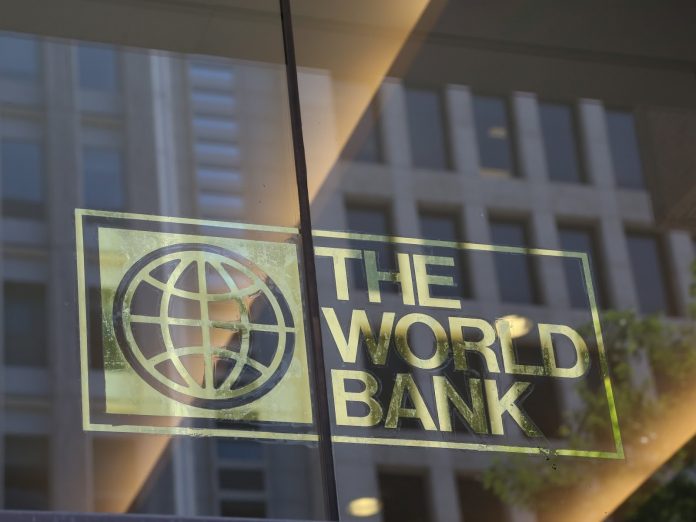April 06, 2021 (MLN): International Monetary Fund (IMF) has projected Pakistan’s GDP growth at 1.5 percent in 2021 with a forecast of an 8.7 percent average rate of inflation in FY21 that contradicts sharply as it is higher than the government’s estimate of 6.5 percent.
IMF, in its annual World Economic Outlook (WEO), said Pakistan’s current account deficit to remain at 1.5 percent of GDP in the current fiscal year and 1.8 percent of GDP in the next fiscal year.
Moreover, IMF expects the unemployment rate in Pakistan to rise by 0.5 percent to 5 percent during the current fiscal year, however, improving next year to 4.8 percent.
It said the Pakistan economy is expected to grow at 4 percent in 2022 after a contraction of 0.4 percent in 2020.
As per WEO by IMF, the global economy to grow at 6 percent in 2021, moderating to 4.4 percent in 2022. The upward revision reflects additional fiscal support in a few large economies, the anticipated vaccine-powered recovery in the second half of 2021, and continued adaptation of economic activity to subdued mobility.
While Emerging and Developing Asia are anticipated to grow by 8.6 percent in 2021 and 6 percent in 2022. China, the only major economy that had already returned to pre-pandemic GDP in 2020, witnessed a positive growth rate of 2.3 percent, is projected to grow by 8.4 percent in 2021 and 5.6 in 2022. On the other hand, IMF projected a stronger recovery for India with growth projected to be 12.5 percent in 2021 and 6.9 percent in 2022.
In a blog post, the economist Gita Gopinath wrote that many other countries are not expected to do so until 2023.
Global growth is expected to moderate to 3.3 percent over the medium term—reflecting projected damage to supply potential and forces that predate the pandemic, including aging-related slower labor force growth in advanced economies and some emerging market economies. Thanks to unprecedented policy response, the COVID-19 recession is likely to leave smaller scars than the 2008 global financial crisis.
Nonetheless, the future presents daunting challenges. The pandemic is yet to be defeated and virus cases are accelerating in many countries. Recoveries are also diverging dangerously across and within countries, as economies with slower vaccine rollout, more limited policy support, and more reliance on tourism do less well.
The upgrades in global growth for 2021 and 2022 are mainly due to upgrades for advanced economies, particularly to a sizeable upgrade for the United States (1.3 percentage points) that is expected to grow at 6.4 percent this year. This makes the United States the only large economy projected to surpass the level of GDP it was forecast to have in 2022 in the absence of this pandemic. Other advanced economies, including the euro area, will also rebound this year but at a slower pace, Gita wrote.
Uneven recoveries are also occurring within countries as young and lower-skilled workers remain more heavily affected. Women have also suffered more, especially in emerging markets and developing economies. Because the crisis has accelerated the transformative forces of digitalization and automation, many of the jobs lost are unlikely to return, requiring worker reallocation across sectors—which often comes with severe earnings penalties.
Considering the large uncertainty surrounding the outlook, policymakers will need to continue supporting their economies while dealing with more limited policy space and higher debt levels than prior to the pandemic. This requires better-targeted measures to leave space for prolonged support if needed. With multispeed recoveries, a tailored approach is necessary, with policies well-calibrated to the stage of the pandemic, the strength of the economic recovery, and the structural characteristics of individual countries.
Right now, the emphasis should be on escaping the health crisis by prioritizing healthcare spending—on vaccinations, treatments, and healthcare infrastructure. Fiscal support should be well targeted to affected households and firms. Monetary policy should remain accommodative (where inflation is well behaved), while proactively addressing financial stability risks using macroprudential tools, Gita added.
On the international stage, first and foremost, countries need to work together to ensure universal vaccination. While some countries will get to widespread vaccinations by this summer, most, especially low-income countries will likely have to wait until the end-2022. Speeding up vaccinations will require ramping up vaccine production and distribution, avoiding export controls, fully funding the COVAX facility on which many low-income countries rely for doses, and ensuring equitable global transfers of excess doses.
Policymakers should also continue to ensure adequate access to international liquidity. Major central banks should provide clear guidance on future actions with ample time to prepare, to avoid “taper-tantrum” kinds of episodes as occurred in 2013. Low-income countries will benefit from further extending the pause on debt repayments under the Debt Service Suspension Initiative and operationalizing the G20 Common Framework for orderly debt restructuring. A new allocation of the IMF’s Special Drawing Rights will provide needed liquidity protection in highly uncertain times.
Even while all eyes are on the pandemic, it is essential that progress is made on resolving trade and technology tensions. Countries should also cooperate on climate change mitigation, modernizing international corporate taxation, and on measures to limit cross-border profit shifting, tax avoidance, and evasion, the research added.
Copyright Mettis Link News
40564









